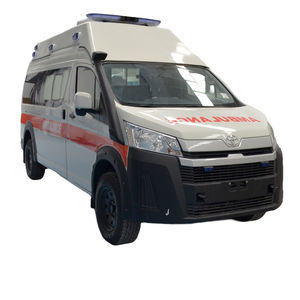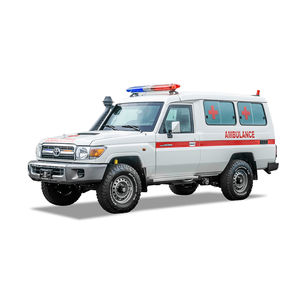
- Company
- Products
- Catalogs
- News & Trends
- Exhibitions
Patient transfer ambulance Nissan Amb15vanmodularlight van

Add to favorites
Compare this product
fo_shop_gate_exact_title
Characteristics
- Applications
- for patient transfer
- Configuration
- van, modular, light van
- Type
- type C, type B, type A
Description
The vehicle is charged via this cable. While the vehicle is in motion, it is provided with a full sinus inverter device located behind the seat in the 220V electric drive section required for the medical devices inside. There is a rectifier device beside the inverter device. Vehicle batteries are also charged through this device. There is also an additional battery under the Nissan ambulance driver’s cabin. When the ambulance is not in motion, the necessary lighting and 12V electricity requirement for the cabin is provided with a spare battery without using the vehicle’s battery.
Side coverings and cabinet materials used inside the Nissan ambulance patient cabin are covered with non-flammable and non-combustible ABS plastic material. When viewed from the back door, there is a medical equipment cabinet and companion seat on the right side. The companion ambulance seat is capable of tilting 180 degrees, the ground connection intermediate apparatus has been designed and installed in compliance with 10G crash test regulations and EN1789 norms. There is a main stretcher in the Nissan ambulance. This stretcher is fixed on the ground. There is also a 3-point seat belt on the stretcher.
On the right side of the Nissan Ambulance, there are oxygen cabinets and medical equipment cabinet in the patient section. There are 20 lt oxygen cabinet, oxygen blowing, and humidification systems in the ambulance. There are locks on the ambulance cabinet doors to prevent opening while the vehicle is in motion. There is also a doctor’s seat in the intermediate compartment of the ambulance. The seat of the doctor’s seat is foldable and saves space when the patient stretcher is not used.
VIDEO
Catalogs
No catalogs are available for this product.
See all of AmbulanceMed‘s catalogsRelated Searches
- Medical kit
- Stretcher
- First response vehicle
- Emergency bag
- Emergency stretcher
- Electronic ventilator
- Non-invasive ventilator
- External defibrillator
- Mobile health vehicle
- Foldable stretcher
- Van first response vehicle
- Aluminum stretcher
- Portable ventilator
- CPAP ventilator
- Emergency ventilator
- Ventilator with touch screen
- Polyester bag
- Automated external defibrillator
- Biphasic external defibrillator
- Truck mobile health vehicle
*Prices are pre-tax. They exclude delivery charges and customs duties and do not include additional charges for installation or activation options. Prices are indicative only and may vary by country, with changes to the cost of raw materials and exchange rates.





